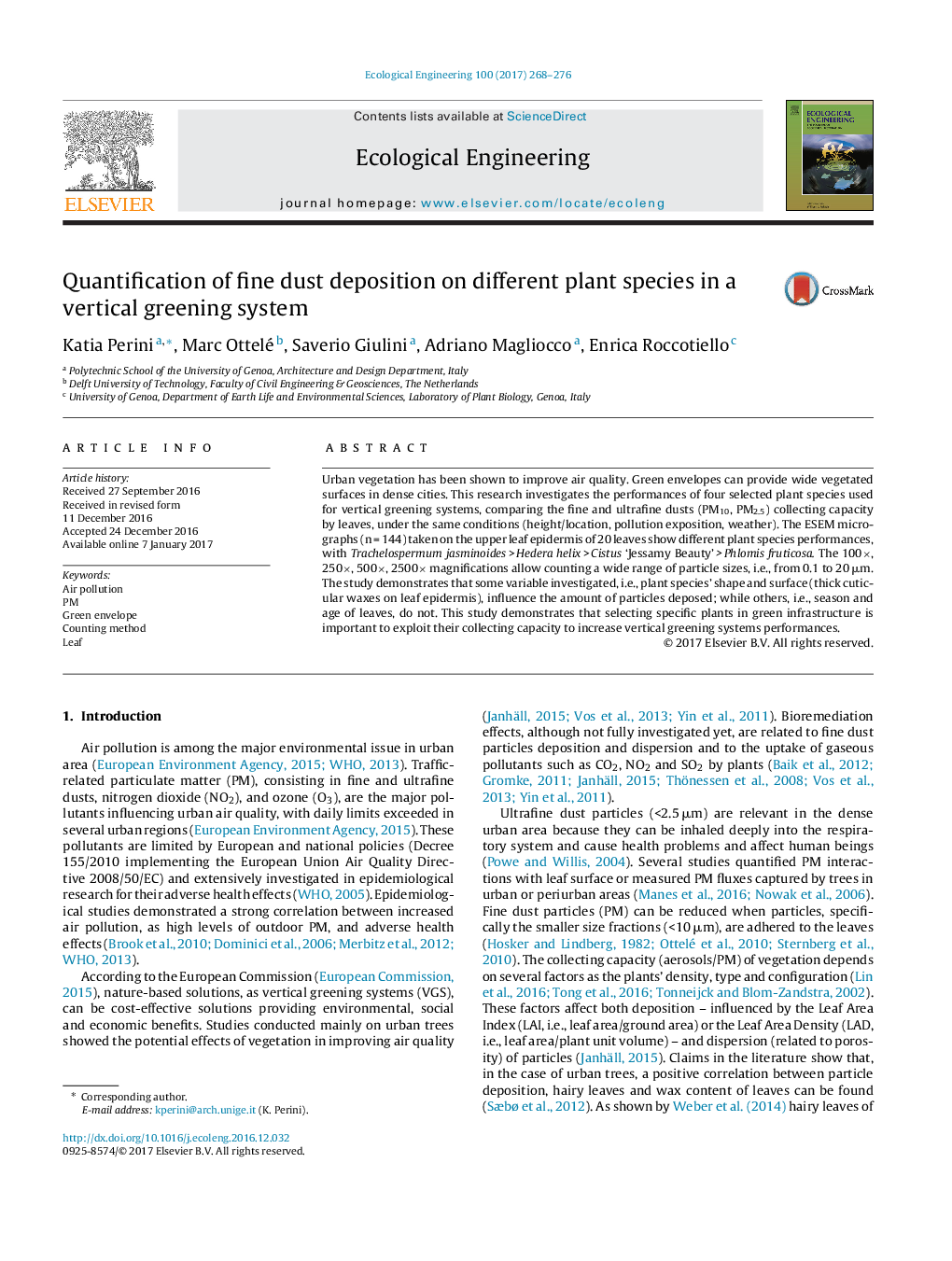| Article ID | Journal | Published Year | Pages | File Type |
|---|---|---|---|---|
| 5743729 | Ecological Engineering | 2017 | 9 Pages |
â¢Fine and ultrafine dusts (PM10, PM2.5) collecting capacity of plant species can be quantified.â¢Plant species and structure and leaf morphhology influence PM collecting capacities.â¢To improve air quality the most effective plant species should be used.
Urban vegetation has been shown to improve air quality. Green envelopes can provide wide vegetated surfaces in dense cities. This research investigates the performances of four selected plant species used for vertical greening systems, comparing the fine and ultrafine dusts (PM10, PM2.5) collecting capacity by leaves, under the same conditions (height/location, pollution exposition, weather). The ESEM micrographs (n = 144) taken on the upper leaf epidermis of 20 leaves show different plant species performances, with Trachelospermum jasminoides > Hedera helix > Cistus 'Jessamy Beauty' > Phlomis fruticosa. The 100Ã, 250Ã, 500Ã, 2500à magnifications allow counting a wide range of particle sizes, i.e., from 0.1 to 20 μm. The study demonstrates that some variable investigated, i.e., plant species' shape and surface (thick cuticular waxes on leaf epidermis), influence the amount of particles deposed; while others, i.e., season and age of leaves, do not. This study demonstrates that selecting specific plants in green infrastructure is important to exploit their collecting capacity to increase vertical greening systems performances.
